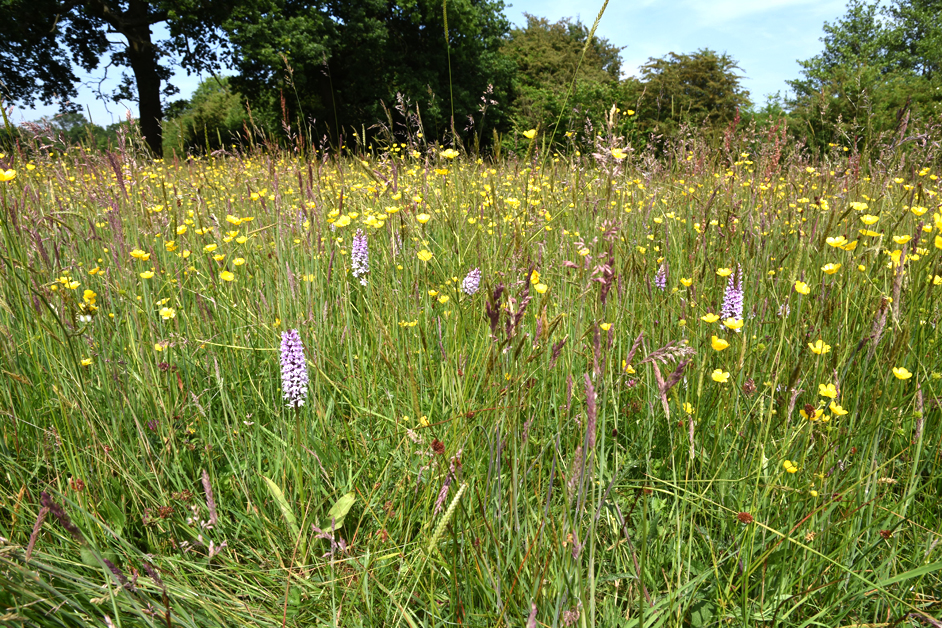Water is an essential asset for any farm. Yet despite its importance, English waterways are in a poor state. However, as our Sustainability Consultant Navjot Gill explains, financial aid is available to help you improve water quality on your land. In some areas, this includes grants from water companies, but you’ll have to act quickly.
The problem with our water quality
According to a House of Commons’ Environmental Audit Committee report in 2022, “only 14% of rivers in England can currently claim to have good ecological status”. Furthermore, they attributed the poor quality of water in English rivers to “chronic underinvestment and multiple failures in monitoring, governance and enforcement”.
The report included a section on agricultural pollution. It reported that the use of fertilisers and pesticides and the intensive farming of livestock and poultry contribute to poor water quality. It reported that run off from land carries chemicals and faecal matter into streams and rivers, thus contaminating watercourses.
Of this pollution, the main contributors from farming were:
- Nitrates and Phosphates, with 55% of river water bodies in England assessed to have failed phosphorus standards for good ecological status
- Pesticides and Veterinary Medicines
- Faecal bacteria and pathogens
- Soil sediments
- Microplastics from sewage sludge, compost, and other organic manures
At the time of writing (April 2024) the Environmental Audit Committee was due to give evidence that the explores progress by government, regulators and the industry on progress made on improving waster quality since their inquiry was conducted.
Improving water quality makes sense for farming
In agriculture, water is essential to plant and crop growth and quality. This is turn affects not only what we eat, but also what livestock eat. Protecting our water can support healthy, good quality crops, feed, and forage to help strengthen the supply of in demand food for an ever-growing population.
What are the main benefits of improving water quality?
For farms, and the general environment, improving water quality provides key benefits.
It helps to keep the general ecosystem healthy
A healthy water ecosystem ensures several benefits. It purifies water, provides flood control, and supports plant and animal habitats. It also reduces the risk of eutrophication, where high levels of phosphate in the water cause excessive growth of algae resulting in reduced biodiversity and increased toxicity of the water. Also, it prevents the silting of fish spawning grounds.
It improves soil health
Improving water quality enhances soil structure and reduces erosion. Reducing or eliminating contaminants in water helps reduce soil degradation, promoting its ability to retain water and nutrients.
It helps to keep livestock and the public safe
Poor water condition can pose a threat to plants, animals, and humans. It negatively affects crop yields and crop quality, and a lack of good drinking water can put pressure on livestock. It can also result in toxic particles accumulating in the food chain, affecting both animals and public health.
Polluted water can even have a direct affect on humans. This is particularly tricky with private water sources in rural areas, causing issues such as gastro-enteritis and E.coli infections. Water-borne nitrates can cause serious problems for humans, so it’s important to guard against high levels.
SFI is helping the fight for good water
SFI (Sustainable Farming Incentive) is specifically helping farmers and landowners to make water improvement part of their farm work. Here’s a quick guide to the things you can do, how they help, and how much you can be paid.
| Action | Description/ Benefits | SFI Annual Payment Rate |
| Manage grassland for flood and drought resilience and water quality | Grassland is managed to reduce runoff from rainwater, and store more surface and groundwater through changes such as creating topographical features that will retain water after periods of high rainfall | £938/ha |
| Manage features on arable land for flood and drought resilience and water quality | Features on arable land, such as sediment traps, bunds, swales and the area surrounding them, are managed to reduce runoff from rainwater and store more surface and groundwater | £1,241/ha |
| Manage riparian and water edge habitats | There is a 12-24m wide area of water-dependent habitat between the land and the water’s edge of rivers and streams (riparian habitats) and lakes and ponds | £1,186/ha |
| 6-24m 3-dimensional waterbody buffer strips | There is a 6m to 24m wide buffer with raised ridges covered in vegetation next to a waterbody or field boundary | £1,182/ha |
| 12m to 24m watercourse buffer strip on cultivated land | There is a grass buffer, with an intact sward which is managed to provide some shorter vegetation next to the crop | £707/ha |
| Very low nitrogen inputs to groundwaters | There is an intact grass sward throughout the year, with reduced nutrient inputs applied | £396/ha |
| Manage intensive grassland adjacent to a watercourse | There is a dense, diverse grass sward throughout the year next to a watercourse | £311/ha |
| Nutrient Management Plan | You assess your current approach to nutrient usage, and effectively plan how to manage nutrient usage more efficiently and effectively, and plan how to optimise use of organic sources of crop nutrition | £652 per agreement |
| Habitat strip next to waterbodies | There is a 6m to 12m wide habitat strip next to a waterbody, with a mosaic of tussocky grasses and naturally colonised or planted tree and scrub with an open canopy | £742/ha |
Certain areas qualify for Water Restoration Fund grants
At the start of April 2024, the Government introduced its Water Restoration Fund, with the aim of repairing and enhancing water systems and returning them to good ecological status. It comes at a good time, with farmers looking to move towards more sustainable practices to improve their farms profitability while protecting the natural environment.
The fund is financed by environmental fines and penalties issued to water companies between April 2022 and October 2023. Farmers and land managers, amongst others, can apply for funding to boost their capacity to deliver projects that improve water quality and prevent further deterioration.
To qualify, projects must be in an area in which sewage collection and treatment is provided by:
- Thames Water
- United Utilities
- Yorkshire Water
- Southwest Water
- Anglian Water
There are two types of award, short term and medium-to-long term. You’ll have to act quickly though, as applications close on 7 June 2024.
Short term grants to build capability
Grant value: from £75,000 to £250,000
Project length: 6 to 12 months
Start date: from July 2024
Project end date: within 12 months of the project start date
Medium to long-term grants to help you carry out projects you’ve already planned
Grant value: from £500,000 to £2 million
Project length: 12 to 30 months
Start date: from July 2024
Project end date: by 31 March 2027
Speak to Promar
We’re currently helping farms up and down the country to build their business and environmental resilience, and this includes projects where we are improving water quality. We can help you to access all sorts of funding streams and devise strategies to include these enhancements as part of an ongoing business-improvement programme.
Talk to us. We can share our experiences and insights with you, to help you thrive in the new farming environment, where economic success goes hand-in-hand with environmental efficiency.








